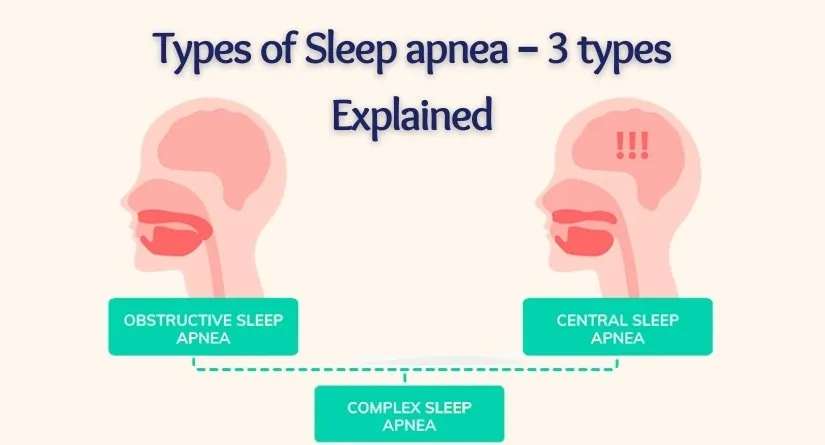sleep disorder is a sleep disorder that is on the rise globally. Despite its prevalence, the illness frequently goes undetected. Because the majority of the frequent and characteristic signs of sleep apnea occur while people are sleeping, many people may be unaware that they are suffering symptoms and go undetected and untreated.
There 3 types of sleep apnea conditions. These include:
- Obstructive Sleep Apnea (OSA)
- Central Sleep Apnea
- Complex sleep disorder
- Obstructive Sleep Apnea
Obstructive sleep apnea, often known as OSA, is the most frequent type of sleep apnea. OSA occurs when the throat muscles in the back of your throat, which usually relax during sleep, collapse too much to allow normal breathing. When the throat muscles collapse, the soft tissues in the back of the throat, such as the soft palate, uvula, tonsils, and tongue, can fall back, partially or fully restricting the normal flow of air in your airway. When your brain detects a lack of oxygen, it sends a signal to your body to wake up enough to reopen your airway, which may cause you to gasp for air during the night.
Treatment
- Continuous positive airway pressure (CPAP): A CPAP machine keeps the airway open by continually blowing air into the throat through a mask worn over the nose (or the nose and mouth). It keeps a person’s upper airway open while they sleep by “stenting” it with pressured air.
- Surgery: By removing extra tissue or remodeling the airway, surgery can address structural abnormalities in the mouth and upper airway.
- Oral appliances: By preventing the tongue from slipping back on the soft palate, certain appliances can assist maintain the airway open.
- Central Sleep Apnea
Central sleep disorder is less common than Obstructive sleep disorder. It’s also more difficult to diagnose and treat. The brain does not deliver necessary information to muscles controlling breathing in central sleep disorder, unlike mechanical conditions that cause obstructive sleep disorder. While central and obstructive sleep disorders share many symptoms, such as breathing pauses, frequent awakenings during the night, and excessive sleepiness during the day, central sleep disorder commonly affects people who have underlying illnesses, such as a brain infection or other brainstem conditions.
Treatment
- The underlying cause of central sleep apnea should be addressed, as this may help to resolve the apnea. It will not, however, always heal the problem
- Although CPAP equipment can help with central sleep apnea, in some circumstances, specialist positive airway pressure modes may be required. It may be beneficial to use bilevel positive airway pressure or adaptive servo-ventilation. When a person stops breathing, these gadgets give breaths.
- Complex Sleep Apnea
Doctors recently recognized complex sleep disorder, a combination of obstructive and central sleep disorder, as the third type. Patients may initially have symptoms of obstructive sleep apnea, but CPAP is not sufficient. Even when the airway is treated, breathing issues persist, suggesting that something else contributes to apnea.
Treatment
- Treatment for complex sleep disorder syndrome may include a combination of approaches, such as treating any underlying problems and using CPAP or other positive airway pressure devices.
Sleep apnea comes in 3 types and negatively affects a person’s life and increases the risk of fatal conditions. Treatment helps with sleep and reduces chronic health risks. If experiencing fatigue or interrupted sleep, discuss a sleep study with a doctor.

